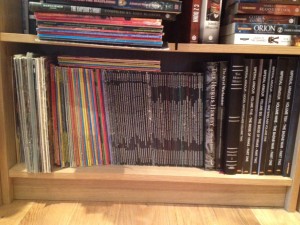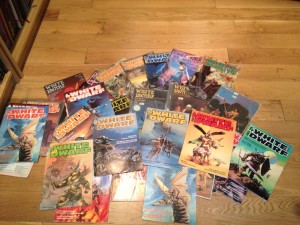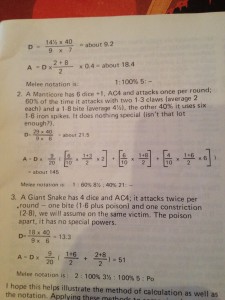A lot of people don’t understand how dudes who are into hardcore punk can possibly have it in them to be such massive fucking losers with an obsession for Space Marines. I mean, lets look at the facts. Hardcore and punk (at least in the format that the Corehammer writers know & give a shit about) is Do-It-Yourself. It’s a bunch of lads and a bunch of girls who did, and continue to do their own bands, their own labels, their own press, their own sites, their own gigs. And while I know there’s plenty of you little fuckers out there who’ll happily try and squeeze a few quid from your shitty mosh parts, the overarching theme is that as soon as money gets involved, things start to dilute.
Lets contrast this with Games Workshop. A company worth millions. That employs over 2000 people, that is floated on the stock market, that frequently increases its prices while decreasing its contents, much to the fury of many of its neck-bearded patrons, who still flock to their local shop anyway, and in droves on the day of a new books release.
Seems like the two things are worlds apart right? But if we stretch it back a few years, you’ll see that the beginnings of Games Workshop aren’t that much different from the beginnings of plenty of DIY record labels that are now household names to dorky straight edge and hardcore kids.
We’ve all seen distro’s at the gigs. Flicking through boxes of records and zines that some poor fucker has had to ship over just so he can expose more awesome punk bands to dudes who have a few spare quid in their pockets. Well, this is exactly how Ian Livingstone and Steve Jackson started Games Workshop. 1975, a year before the first Ramones record, Steve and Ian wanted to bring the ‘Pen & Paper RPG’ to the UK. And instead of just sitting back and thinking about it, they start up their own distro. Selling D&D scenarios and books from their flat in London. Before that, they had their own zine about gaming called Owl & Weasel. They had shitty jobs that they worked to keep their passion for gaming alive, they lived in vans, they focussed exclusively on getting the word out. They were massively responsible for making D&D one of the biggest games the world has ever known.
Owl And Weasel ended up becoming White Dwarf. And while the White Dwarf that we know now is just the monthly catalogue / price list interspersed with a few pictures of that cute little green haired bird, (they’ve even got rid of the ‘Eavy Metal paint guides…WHY?) The old White Dwarfs were tomes of mystery and beauty. The art work in those early issues is definitely dated now, and won’t appeal to the screaming 15 year old kid in GW on a Saturday afternoon who doesn’t understand why John Blanche is a genius. But it’s that style of art, the Science Fantasy aesthetic, that I remember as a really young lad looking through books in WH Smiths, and while I love the current level of Games Workshop illustrations, those older ones will always have a place in my heart. White Dwarf contained Scenarios for D&D, guides like “Upgrading Aristocracy in Traveller,” and “How To Play An Evil Priest”. They featured articles on how to write scenarios that take place in space ports, or “Bloodsuckers: Brief Notes On The Ecology Of The Vampire In D&D”. There were new miniature lines from other companies, play-by-mail ad’s (fun fact. Mark Magill from Down And Outs once got involved in a Ghostbusters play-by-mail game. No matter how bad a day I’m having, that always brightens things up.) Now this was all before my time of course, when I bought my first White Dwarf (January 1992, issue 145, an excellent retrospective of which can be found here.) it had long since been polarised to a GW exclusive publication. But man, back before my day, they had articles that looked like THIS:
They started to put on their own shows (well, gaming conventions…) and earned a decent name for themselves as solid distributors. They kept on moving and started their own miniatures company (Citadel) They brought Runequest, MERP, and tonnes of others over to the UK. And from there the company grew. They opened up shops, wrote books, pushed for the continuous expansion of the world they helped create, until we reach the bloated monster that is Games Workshop 2013.
I guess the main difference between the DIY punk culture is that we don’t want to turn this in to a business that pays our phone bill every month. Jackson and Livingstone always intended to make a living from their hobby. But the fact remains that the humble beginnings of this gaming giant are punk as fuck. They’re as punk as Wattie having a piss on a picture of Thatcher. Furthermore, even throughout the nineties Games Workshop, and other independent gaming companies were all using their own methods to reflect the world we lived in at the time, the same world that most of the Corehammer lads all remember from growing up. Those Orks storming through planetary systems smashing everything they can find? They’re based on Football Hooligans in the 80’s, the overreaching totalitarian state of the Imperium Of Mankind? That’s a dystopian aesthetic that is prevalent across a hell of a lot of sci-fi that was shat out of the Cold War age.
I guess the main draw for a man in his mid-30’s is nostalgia. While we’ll swing the company a few shekels here and there for the most part it is to keep grasping at that decaying aesthetic that blew our heads off when we were kids. But if the fire of the Games Workshop of our youths is dwindling, only to be grabbed again in fleeting moments during HH novels, then where do we look for alternatives in the gaming world?
Thankfully there are plenty of dudes out there who have similar thoughts, and over the years there has been a marked growth in the number of people sculpting miniatures in their bedrooms and flogging them online, or small boutique games designers making 2 million quid on Kickstarter just because the sheer scope of their idea is absolutely stunning, or ex-GW employees striking out on their own and waging war on the concept of ‘a premium product for a premium price’. It’s heartening to see and it gives me a lot of hope. I love Games Workshop products but there is more out there to see man, and some of it is really, really nice.
Maybe its a personality issue that draws lads like us to both punk music and wargaming, and that it is the search for these types of ethics and outlooks that keeps our interest piqued. Or maybe I’m just clutching at straws when I draw these comparisons, although I know for a fact that I’m far from alone in thinking them, or maybe I’m just trying to justify to myself why I keep dropping money on these big companies, who knows. But I do know that the humble beginnings of the gaming industry are as DIY as anything else that Johnny Hardcore might be Tweeting about this week, and while Games Workshop might be the Victory Records of gaming, remember, Victory put out the new Terror record, and its brilliant, (but if you’re buying it you need to be getting it form our man Kitzel at Reaper Records) Victory Records was also how I first heard about Bad Brains. And Games Workshop is how some young kid is going to have his mind blown by a Young Miniatures bust or a new Kingdom Death miniature in 10 years time. I don’t say that to bash GW or say that this company or that company is better than them, but what I am saying is that there is more out there to find, in the same way that there was more out there than Metallica when I was a lad, I just needed to Scratch The Surface to find it. And like so many massive bands, they might not be punks now, but they certainly were back when they had hearts and balls. Just like our boys over at Games Workshop.
This article was written while listening to the new first two Rotting Out records, about 5 times.




Interesting article. It is interesting to note that so many continue to be loyal to GW even whilst fully aware that the company continue to shaft their fan-base at every opportunity, rising prices is only the half of it, they needlessly re-launch rules and entire franchises every few years to ensure that kids keep buying new products, whilst their Squat army stays in the cupboard, gathering dust and is not permitted on a GW table. The curious things is that the vast majority of wargaming is totally DIY and “punk” in ethics. I’m currently sat next to a table of around 150+ miniatures (Napoleonics) which cost less than The Hobbit starter set, and the real irony is that the vast majority of them were designed by the same people (the Perry brothers).
Love punk, love wargaming, GW I will only ever give money for paint!
The Perry Twins do some great miniatures for Warlord’s Bolt Action. 32 Early War brits with loads of options for £18. If my cupboard of shame was not brimming, these would be bought in a heart beat. Possibly the nicest plastic infantry kit I’ve ever seen.
I’m concentrating on Black Powder, Warlord’s Napoleonic game, which Perry have many plastic sets fore. The British line infantry are fantastic, very similar in terms of quality and detail to the WW2 miniatures. Perry is certainly a name you can trust for quality, and in their plastic sets, pretty much unbeatable value for money.
Pingback: Hasslefree Miniatures Review. | COREHAMMER
Ironically it was GW that got me hooked back in the 80’s but at that time there were still lots of little independent games shops in London – a bit like the indy record stores. They’re all gone now. In the whole London area, there’s barely anything to challenge GW these days – and I’m talking about model and gaming retailers.
I never really got into the gaming anyway, I just liked painting the figures. And since Citadel figures were – and largely still are – stubby, graceless things, heavily over decorated, I soon moved on to better things.
But, to give them their due, GW do get the young ‘uns to do something besides sitting in front of a screen. You say – and I’d like to believe it’s true – that one day it will lead all those Warhammer geeks into discovering the good stuff out there too (Kingdom Death, Young’s busts etc).
However I sometimes wonder. GW seems to have such a stranglehold on people’s imaginations. It’s like those Microsoft users who live in a universe in which Apple and LInux simply don’t exist. It can get pretty lonely out here . . .